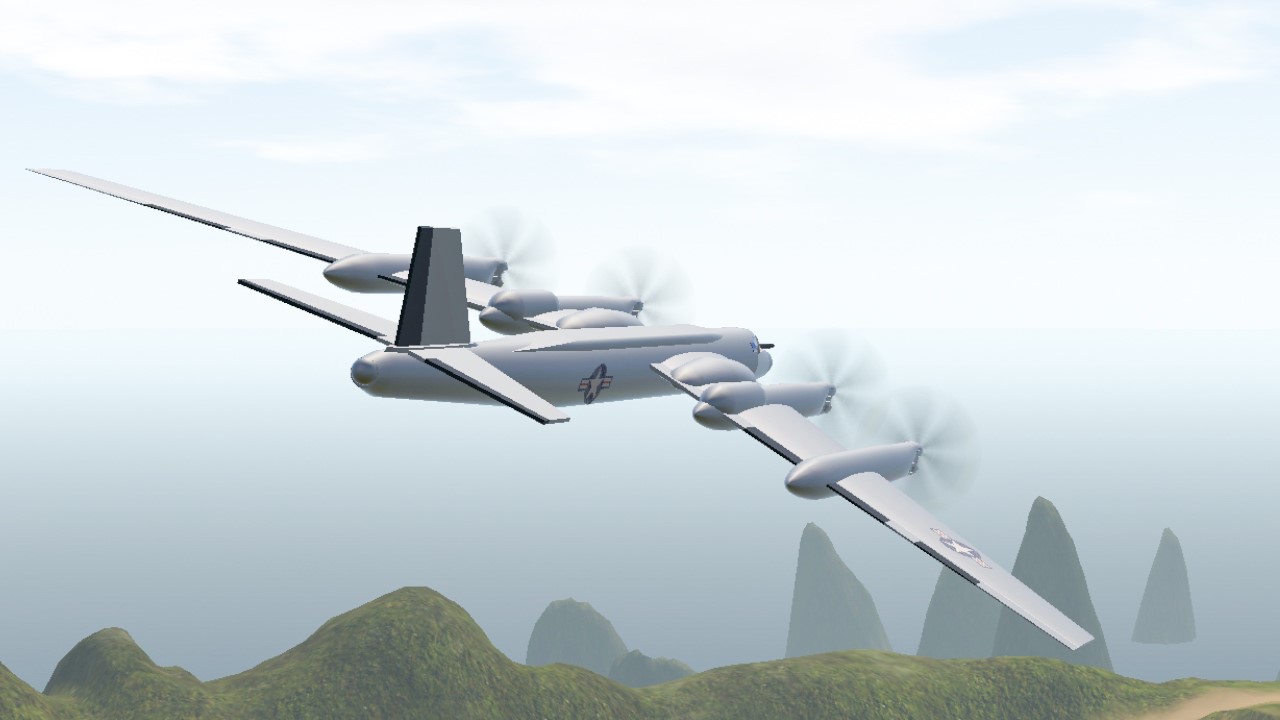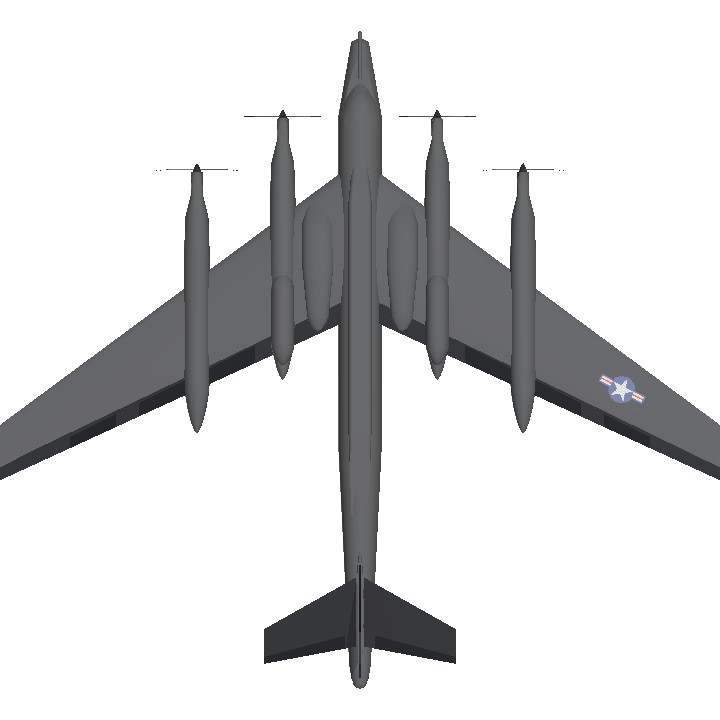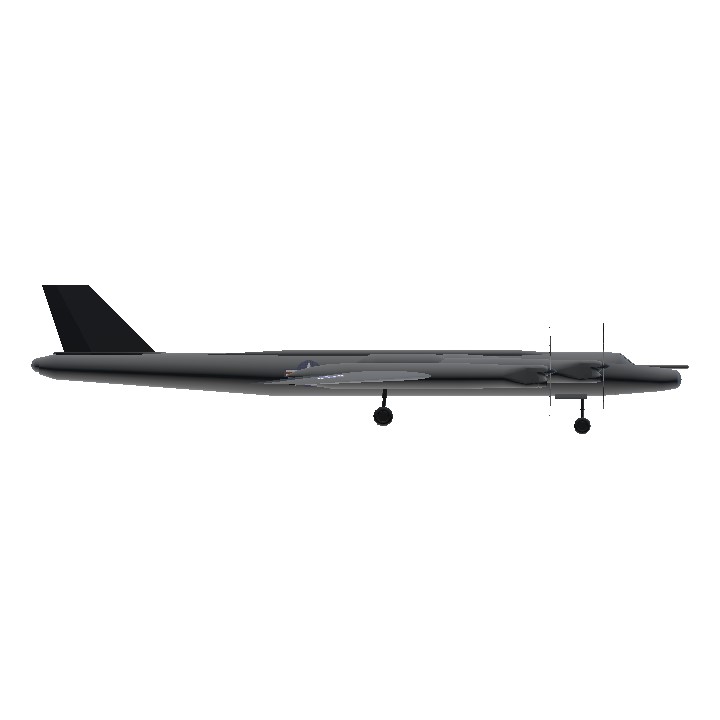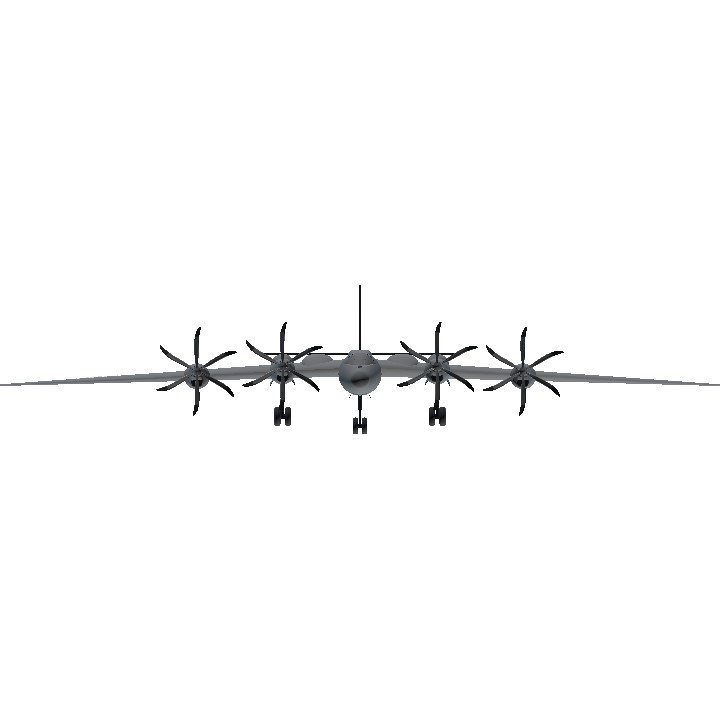scale of aircraft
Remove bombs
Remove hinge and thruster
Remodel the Wing and remodel the fuselage
Certainly! The North American B-20, although not as widely recognized as its more famous contemporaries such as the B-17 Flying Fortress or the B-29 Superfortress, has its unique story integrated into the evolution of military aviation during the World War II era.
The Genesis of the B-20
The B-20 was developed in the early 1940s during a time of heightened military tension and the urgent need for innovative aircraft capable of strategic bombing missions. The United States Army Air Forces (USAAF) sought an answer to the challenges posed by the advanced Luftwaffe and the rising threat of Japan in the Pacific. North American Aviation, known for its innovative designs and engineering prowess, was commissioned to develop a new bomber.
Design and Development
North American engineers took a dual approach in their design process. Drawing from their experiences with the highly successful B-25 Mitchell, they aimed to create an aircraft that expanded its capabilities while introducing new technology. The B-20 was envisioned as a more advanced version that could address the limitations of earlier bombers.
The design featured a sleek, aerodynamic shape that improved performance and reduced drag. The wings were slightly larger than those of the B-25, allowing for better lift and stability. Additionally, the B-20 incorporated advanced technology, including a more powerful propulsion system, which would allow it to cruise at higher altitudes and carry heavier payloads.
Testing and Challenges
The initial phases of testing the B-20 came with their share of challenges. Engineers faced difficulties with engine reliability and aerodynamics that required them to rethink certain aspects of the design. Despite such obstacles, the team worked tirelessly, and with every iteration, the aircraft became progressively refined.
The B-20 eventually conducted its maiden flight in 1943. The test pilots praised its handling characteristics, speed, and payload capabilities. It was a result of rigorous testing that highlighted not only the aircraft’s impressive performance but also its potential to play a critical role in various theaters of war.
Deployment and Roles
Once the B-20 entered production, it was deployed primarily in the European and Pacific theaters. It became known for its versatility; the bombers participated in a wide range of missions, from strategic bombing campaigns against enemy infrastructure to providing close air support for ground troops.
As with any warplane, its deployment was not without peril. Crews faced many dangers, from enemy fighters to anti-aircraft artillery, often under challenging conditions. The B-20 crews developed a reputation for their courage and skill, executing daring missions that contributed to significant victories for Allied forces.
The Battle of Europe
In Europe, the B-20 was critical during key campaigns, including the bombing of Axis supply lines and fortifications. It enabled the allies to disrupt enemy communications and logistics, severely weakening their war efforts. The B-20’s precision bombing capabilities also contributed to the dismantling of critical industrial centers that fueled the German war machine.
The Pacific Campaign
On the other side of the globe, B-20 bombers played an instrumental role in the Pacific campaign. They launched effective attacks against Japanese installations on various islands. Utilizing their range and abilities, these bombers became a vital asset in the island-hopping strategy employed by US forces, often providing air cover and support for ground troops attempting to secure strategic objectives.
Legacy and Impact
As the war progressed and the conflict stretched into the late 1940s, new emerging technologies and designs began to phase out earlier bombers, including the B-20. However, its contributions to the war effort were significant. The aircraft not only demonstrated the evolution of bomber design, but also paved the way for future developments in military aviation.
Following the war, some B-20s remained in service for a short time in secondary roles, but eventually, they were retired as newer, more advanced aircraft took to the skies. Their legacy continued through the influence they had on subsequent designs, and their service marked a critical chapter in the story of aerial warfare.
Conclusion
The North American B-20, while perhaps overshadowed by other bombers of its time, played a vital role in the context of World War II. Its development illustrated the rapid advancements in aviation technology that took place during the 1940s and its successful deployment contributed significantly to allied victories across both Europe and the Pacific. As with many aircraft of its era, the B-20 became part of a grand narrative — one of bravery, innovation, and the relentless pursuit of victory during one of history's most tumultuous times.
Specifications
Spotlights
- Boeing727200F 11 months ago
General Characteristics
- Predecessor [UNINTENTIONAL PLATINUM SPECIAL?] North American B-20
- Successors 1 airplane(s) +31 bonus
- Created On Android
- Wingspan 181.0ft (55.2m)
- Length 165.2ft (50.4m)
- Height 37.5ft (11.4m)
- Empty Weight N/A
- Loaded Weight 34,625lbs (15,705kg)
Performance
- Horse Power/Weight Ratio 0.346
- Wing Loading 14.3lbs/ft2 (69.9kg/m2)
- Wing Area 2,418.0ft2 (224.6m2)
- Drag Points 13229
Parts
- Number of Parts 75
- Control Surfaces 10
- Performance Cost 456





aw yes, a modern bomber that hasn't even been in a war yet fighting in WW2.
(sorry for the late response)
The B-20 (Marauder II)..
Yo this is similar with TU-95 bear
lmao my bomber got a ai variant
((i was the b-20's great-grandfather creator, the b-27
second here
skibidi dop dop yes yes yes yes
W